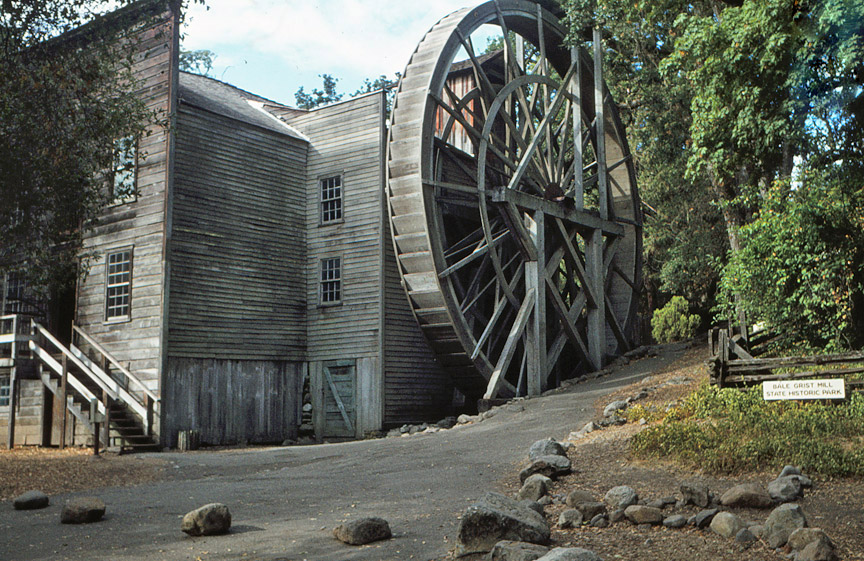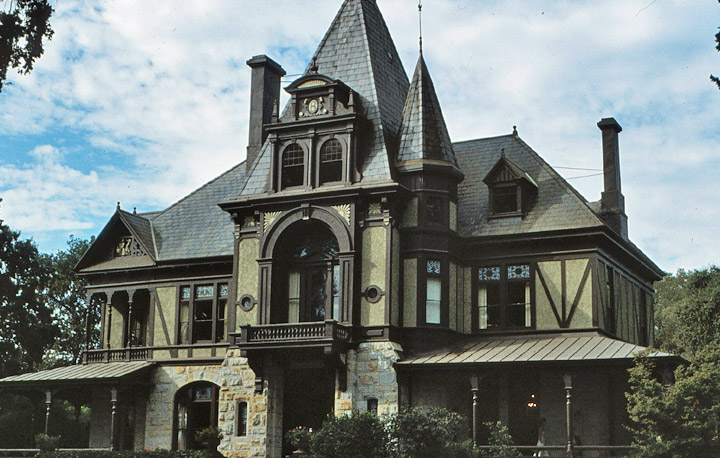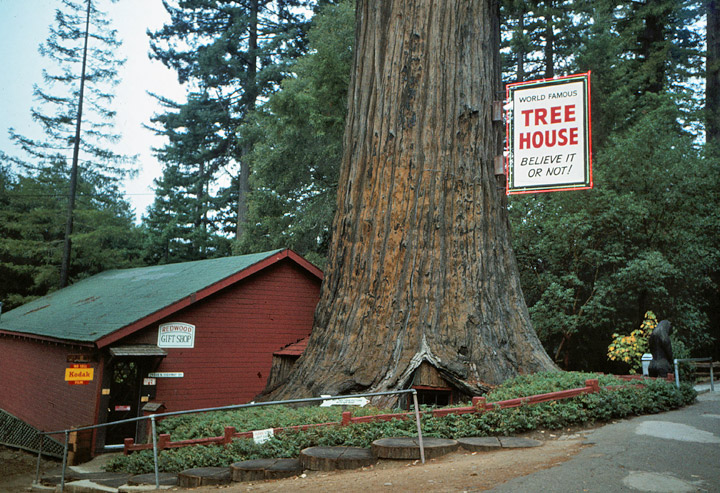

Bale Grist Mill

Bale Grist Mill
Bale Grist Mill State Historic Park
is a California state park located in Napa County between St. Helena and
Calistoga. The park is the site of a water-powered grist mill that was built in
1846. It was once the center of social activity as Napa Valley settlers gathered
to have their corn and wheat ground into meal or flour. The owner of the mill
was Dr. Edward Turner Bale. He received the property in a land grant from the
Mexican government and lived near the site until his death in 1849. In 1871,
Theodore Benedict Lyman bought the mill and surrounding land. He passed it on to
his son, William Whittingham Lyman, and in their care the mill remained in use
until the early 1900s.
After WW Lyman's death it appears his wife, Mrs WW Lyman deeded it to the Native
Sons of the Golden West, and through them the mill was restored during a period
in the late 1960s and early 1970s thanks to the efforts of the Native Son
Parlors of Napa County, under the leadership of past Grand President Bismarck
Bruck, a grandson of Dr. Bale.
The mill and its 36-foot water wheel are protected as a state historic landmark
and have been partially restored. A trail connects the historic park to Bothe-Napa
Valley State Park. Additionally, the park includes the site of the first church
in the Napa Valley as well as the Pioneer Cemetery.
Visitors can hike from the mill on the historic trail to Bothe-Napa Valley State
Park, which features extensive picnic facilities and a number of trails. The
round trip hike from Bale Grist Mill State Historic Park to Bothe-Napa Valley
State Park is approximately two miles.
The gristmill and granary were built with local materials, Douglas firs and
coast redwoods. Some timbers were cut to length with the bark left on, while
others were roughed out with hand tools. The timbers were notched and held in
place with wooden pegs as well as nails and screws.
The foundation of the structure is native stone. The mill was powered by a
waterwheel, with water diverted from Mill Creek nearby. A ditch carried the
water from a millpond to a wooden flume, which brought the water to the top of
the waterwheel.
The first wheel did not provide enough power during dry summers and was replaced
by a larger one, similar to the one at the mill today.
Farmers brought grain to the mill where it was placed into the boot of an
elevator to be mechanically transported upstairs where it was cleaned by various
types of equipment. The slow turning of the old grind stones and the dampness of
the mill's site gave the meal a special quality for making cornbread,
yellowbread, shortening bread and spoon bread.
As old timers put it, "When meal comes to you that way, like the heated
underside of a settin' hen, it bakes bread that makes city bread taste like
cardboard."
Text from Wikipedia

nearby Napa County winery

shop in a Redwood tree house